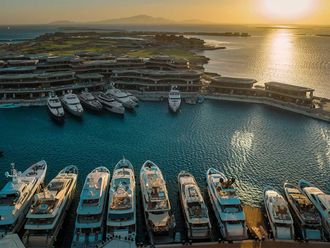Dubai: Gulf Arab banks will have an opportunity to boost their lending in 2012, as they enjoy relatively healthy capital ratios compared with their international peers, though growth in their loan books will be contained by concerns about continuing debt restructurings and worries about the global economy, analysts said.
As a result of the sovereign debt crisis in Europe, many international banks are reducing their exposure to emerging markets, including the Middle East. An estimated 50 per cent of bank lending in the Gulf is carried out by international lenders and their retreat offers local banks a chance to reverse several years of sluggish loan growth that followed the financial crisis in 2008 and the collapse of local real estate markets.
"The key challenge is for regional banks to fill the gap in the market left by international banks currently more focused on their home markets as a result of the global financial crisis and Eurozone debt issues," said Jon Breach, partner at BDO Corporate Finance, a financial advisory firm.
Factors supporting banks
High oil prices above $100 (Dh367) a barrel and average economic growth projections for the Middle East and North Africa of around four per cent for 2012 should support the regional banking industry, which is still recovering from the global financial crisis and a local real estate downturn. The Gulf banking sector is also likely to play a significant role in lending to large-scale government infrastructure projects such as those underway in Qatar and Saudi Arabia, analysts said.
"There will certainly be increased demand from businesses for bank fin-ance. The regional banks are now well capitalised and well supported, so will be able to satisfy this in part," Breach said.
Gulf banks' problem loans appear to have peaked, allowing impairment charges to come down and improvements to profitability, according to Fitch Ratings. In the UAE, for example, Fitch data shows that the banks' non-performing loans ratio in the first half of 2011 remained stable at just below eight per cent, similar to 2010 levels.
Meanwhile, at a time of tightening liquidity for many global banks, Gulf banks generally have good access to funding.
"Most banks have good funding ratios from client deposits and money markets. This is not to say that the Middle East is isolated from the global financial markets, but if local banks need funding, they will more likely turn to institutional clients or retail, affluent clients," said Daniel Diemers, a principal with Booz & Company.
However, few analysts expect an aggressive recovery in lending by Gulf banks, which are likely to remain selective in their approach to agreeing new loans due to the macro-economic and political risks in the region and the legacy of the problem loans of the 2008 crisis.
Fitch said it "expects some loan growth in 2012, as confidence improves and infrastructure projects come on stream, stimulating the local economies" but added that its outlook much depends on developments in the global economy.
Loan growth in the UAE amounted to only three per cent in the first 11 months of last year, according to central bank data, and remained flat in the September-November period.
"On loan growth, we haven't seen much momentum going into 2012, particularly in the UAE. Prospects for loan growth are really dependent on two areas — consumer demand following salary increases for nationals, and government spending," said Raj Madha, a banking analyst at Rasmala Investment Bank.
There's also caution about the large amount of debt that still requires restructuring across the Gulf region. Moody's last month warned that three Dubai government-related entities may struggle to refinance debt repayments worth $3.8 billion due this year.
"Asset quality problems remain in Dubai, primarily relating to the weak real estate sector and ongoing problems in Dubai government-related entities and other major corporates which are undergoing restructuring," according to Fitch.
Concerns about projects
There are also some concerns about whether these multi-billion projects announced in Qatar and Saudi Arabia will finally take off this year or whether the global economic slowdown would result in delays or cancellations, possibly hurting the banking industry. The banks' lending outlook largely depends on these infrastructure projects and any delays could hamper any recovery.
Fitch, for example, in December warned that banks in the UAE face more headwinds as the Abu Dhabi government is cutting spending and the success of plans to restructure and renegotiate loans depends on the global and local economic recovery.












